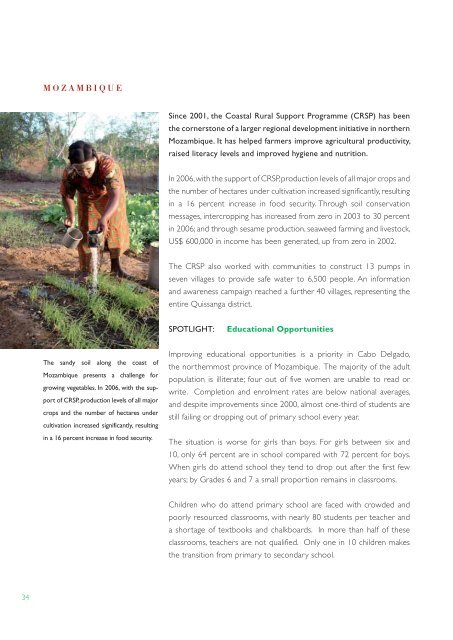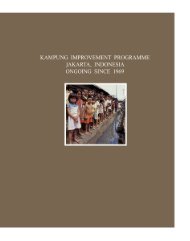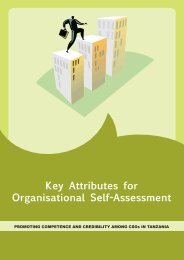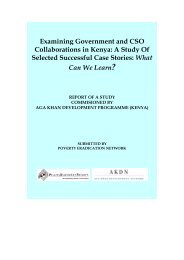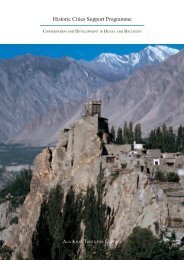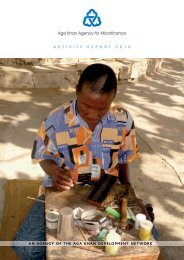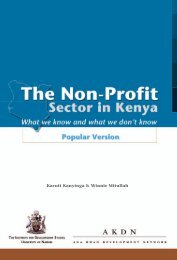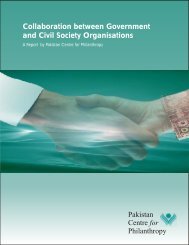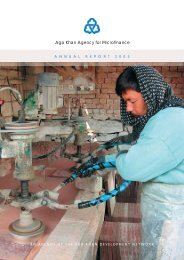AKF Annual Report - Aga Khan Development Network
AKF Annual Report - Aga Khan Development Network
AKF Annual Report - Aga Khan Development Network
Create successful ePaper yourself
Turn your PDF publications into a flip-book with our unique Google optimized e-Paper software.
MOZAMBIQUE<br />
Since 2001, the Coastal Rural Support Programme (CRSP) has been<br />
the cornerstone of a larger regional development initiative in northern<br />
Mozambique. It has helped farmers improve agricultural productivity,<br />
raised literacy levels and improved hygiene and nutrition.<br />
In 2006, with the support of CRSP, production levels of all major crops and<br />
the number of hectares under cultivation increased significantly, resulting<br />
in a 16 percent increase in food security. Through soil conservation<br />
messages, intercropping has increased from zero in 2003 to 30 percent<br />
in 2006; and through sesame production, seaweed farming and livestock,<br />
US$ 600,000 in income has been generated, up from zero in 2002.<br />
The CRSP also worked with communities to construct 13 pumps in<br />
seven villages to provide safe water to 6,500 people. An information<br />
and awareness campaign reached a further 40 villages, representing the<br />
entire Quissanga district.<br />
SPOTLIGHT:<br />
Educational Opportunities<br />
The sandy soil along the coast of<br />
Mozambique presents a challenge for<br />
growing vegetables. In 2006, with the support<br />
of CRSP, production levels of all major<br />
crops and the number of hectares under<br />
cultivation increased significantly, resulting<br />
in a 16 percent increase in food security.<br />
Improving educational opportunities is a priority in Cabo Delgado,<br />
the northernmost province of Mozambique. The majority of the adult<br />
population is illiterate; four out of five women are unable to read or<br />
write. Completion and enrolment rates are below national averages,<br />
and despite improvements since 2000, almost one-third of students are<br />
still failing or dropping out of primary school every year.<br />
The situation is worse for girls than boys. For girls between six and<br />
10, only 64 percent are in school compared with 72 percent for boys.<br />
When girls do attend school they tend to drop out after the first few<br />
years; by Grades 6 and 7 a small proportion remains in classrooms.<br />
Children who do attend primary school are faced with crowded and<br />
poorly resourced classrooms, with nearly 80 students per teacher and<br />
a shortage of textbooks and chalkboards. In more than half of these<br />
classrooms, teachers are not qualified. Only one in 10 children makes<br />
the transition from primary to secondary school.<br />
34


